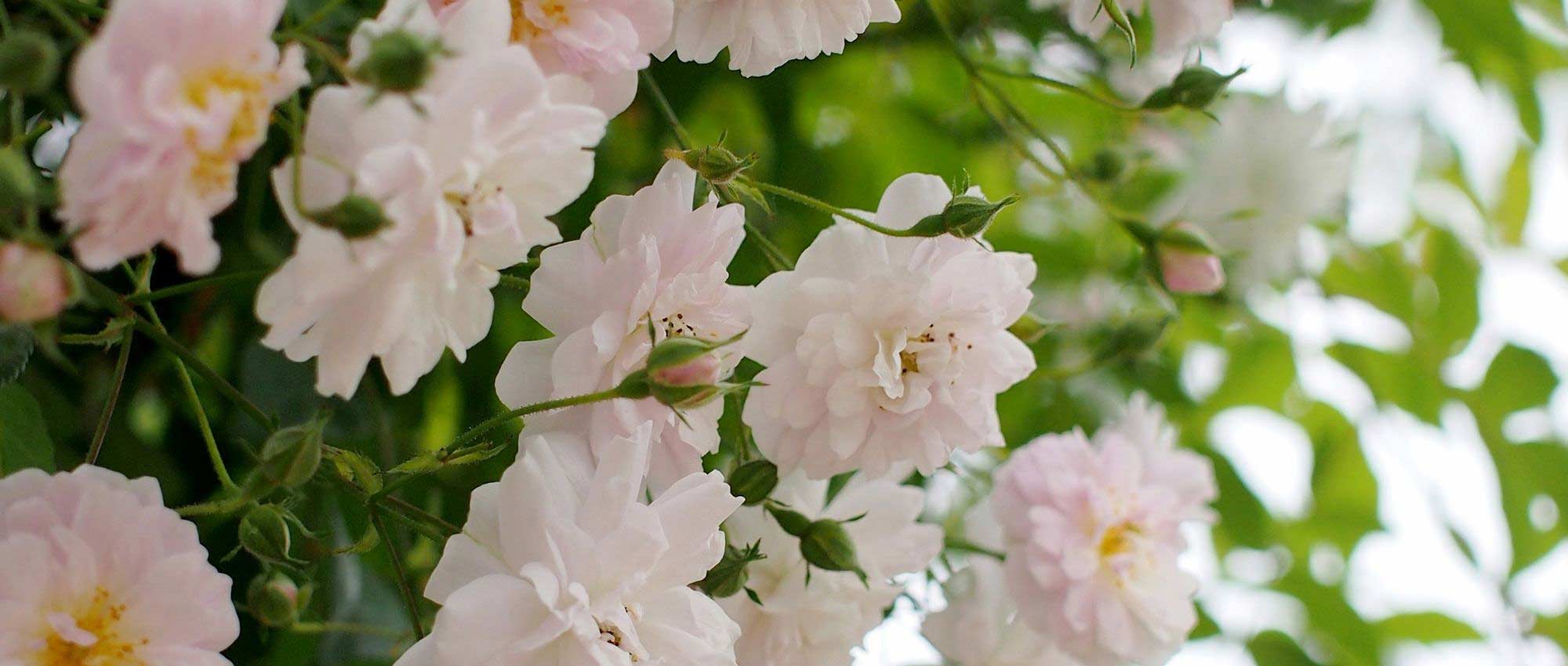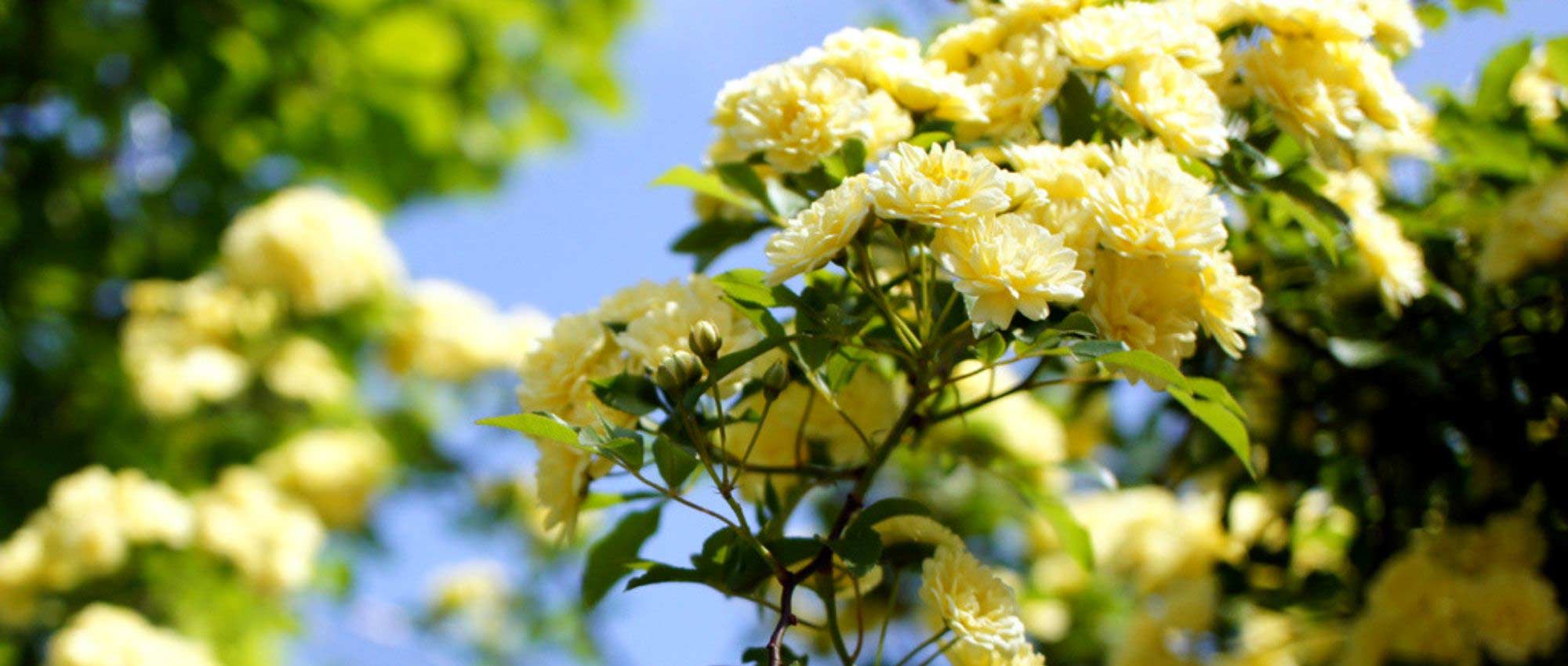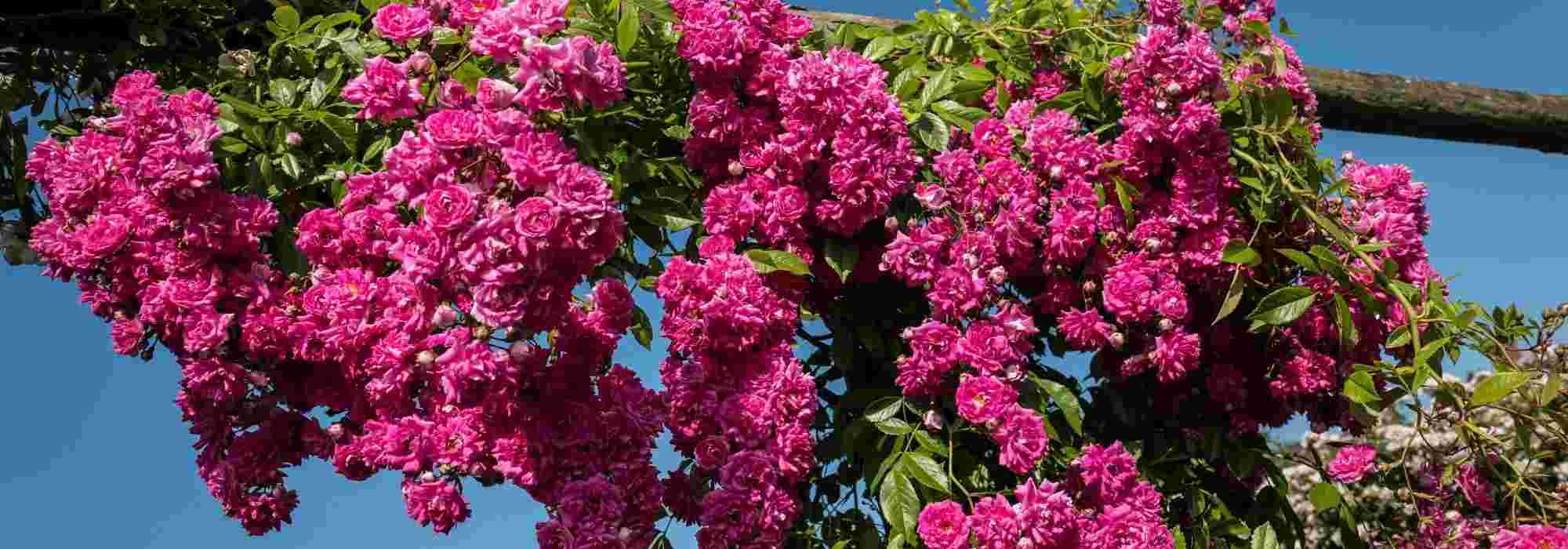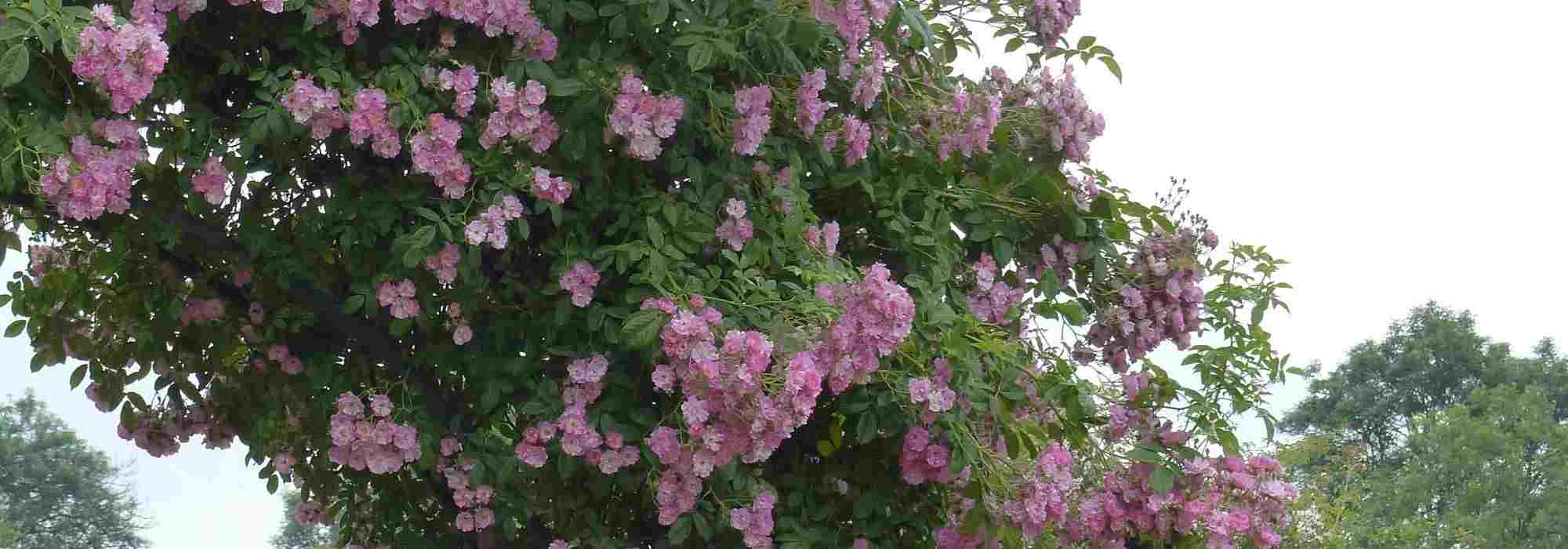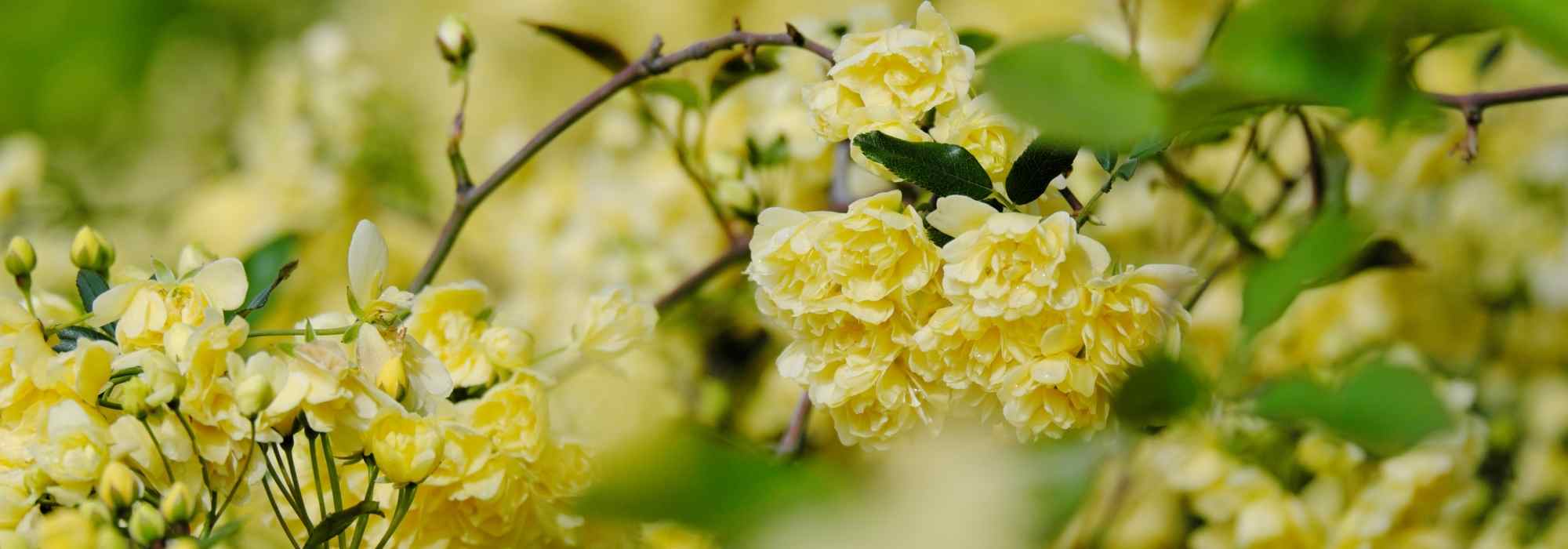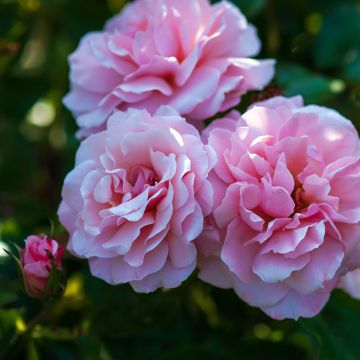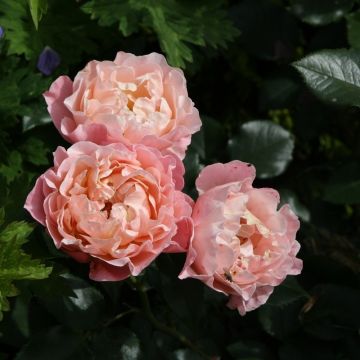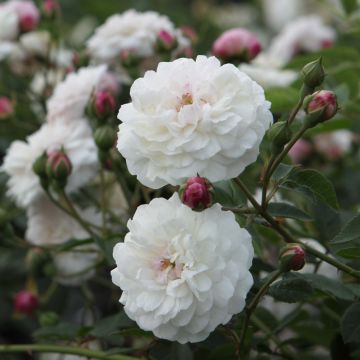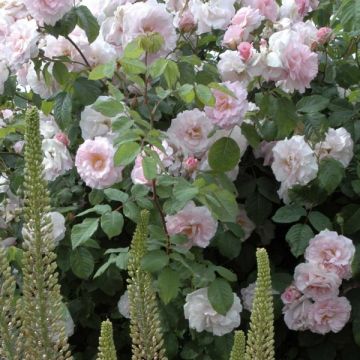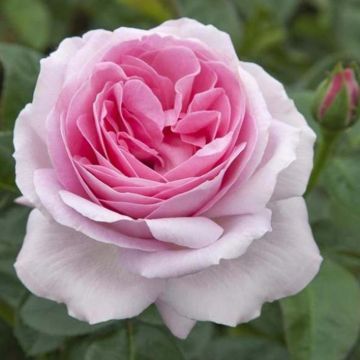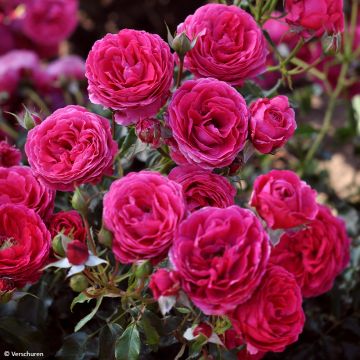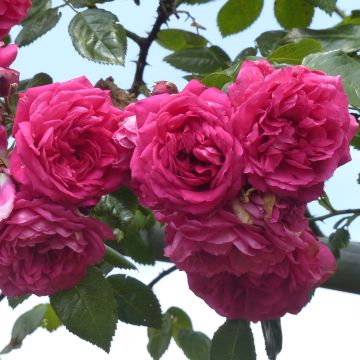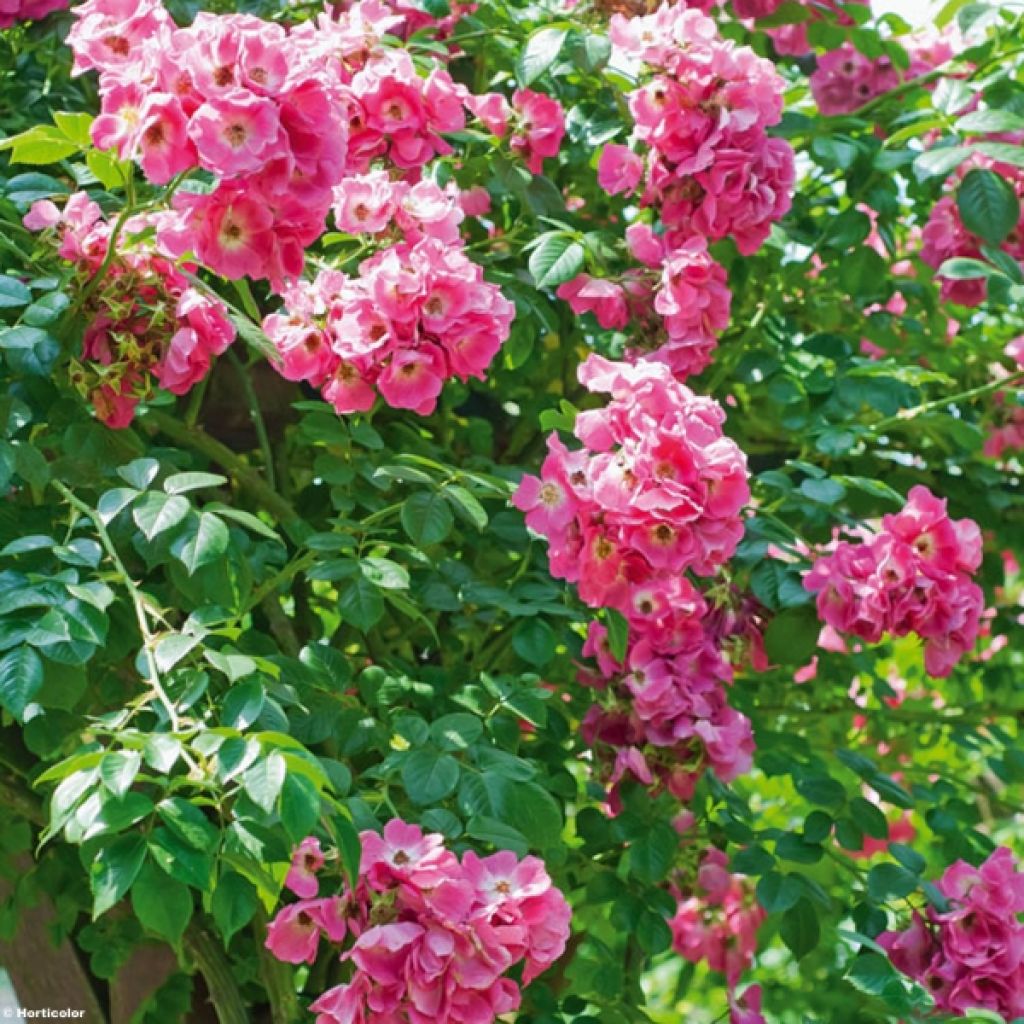

Rosa American Pillar


Rosa American Pillar
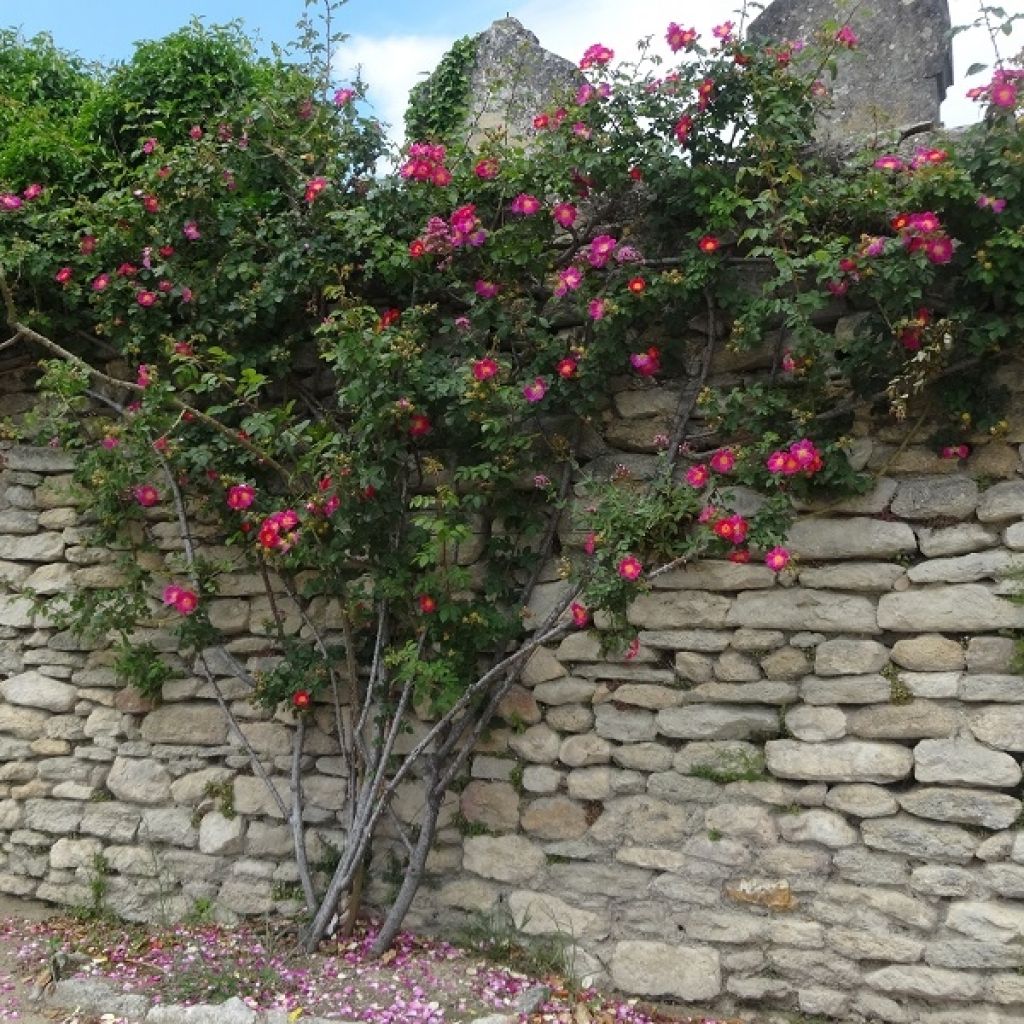

Rosa American Pillar
View more pictures
Hide images

Frédérique B.

American pillar in the background, La Giralda rose in the foreground.
Frédérique B. • 86 FR
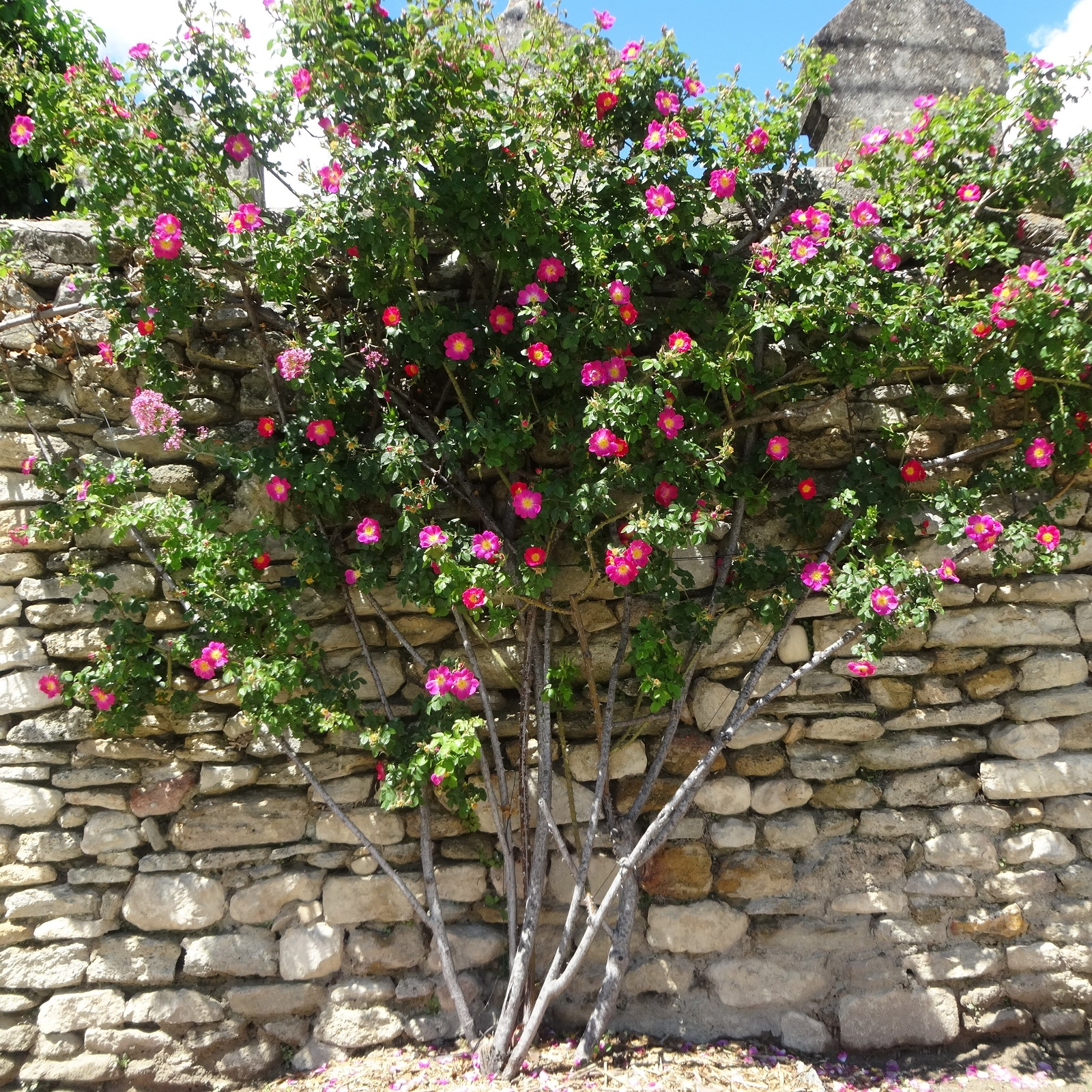
Paysage H.

Rosa 'American Pillar' (Grignan 26)
Paysage H. • 26 FR
Rosa American Pillar
Rosa x wichurana American Pillar
This rose bush currently has beautiful, lush shoots; can't wait to see it climb!
Gisèle D., 08/04/2023
Special offer!
Receive a €20 voucher for any order over €90 (excluding delivery costs, credit notes, and plastic-free options)!
1- Add your favorite plants to your cart.
2- Once you have reached €90, confirm your order (you can even choose the delivery date!).
3- As soon as your order is shipped, you will receive an email containing your voucher code, valid for 3 months (90 days).
Your voucher is unique and can only be used once, for any order with a minimum value of €20, excluding delivery costs.
Can be combined with other current offers, non-divisible and non-refundable.
Home or relay delivery (depending on size and destination)
Schedule delivery date,
and select date in basket
We guarantee the quality of our plants for a full growing cycle, and will replace at our expense any plant that fails to recover under normal climatic and planting conditions.
Description
The 'American Pillar' climbing rose extends its branches up to 6m (20ft) in height if its support allows it. This very vigorous and reliable rose is delightful. The generous flowering and simple beauty of its roses in dense clusters accompany the arrival of summer heat with subtlty. The petals are a beautiful carmine pink and in the centre, a white eye stands out, where golden yellow stamens are placed.
This sarmentous climbing rose is completely hardy and its rapid growth will surprise you. However, its susceptibility to powdery mildew will likely require preventive treatment. Let 'American Pillar' run on a pergola, a wall, a fence, or even an old tree. Don't hesitate to mix it with a clematis to extend the flowering of your garden, especially since this rose is not perpetual. After its single flowering, fruits will appear. Don't cut them, as they will attract a symphony of birds until late winter.
'American Pillar' is a creation derived from the Rosa wichurana rose, this botanical rose is native to Asia. It is the importation and introduction of this novelty that has shaped the rose as we know it today.
Created by Van Fleet in 1902.
Plant habit
Flowering
Foliage
Botanical data
Rosa
x wichurana
American Pillar
Rosaceae
Cultivar or hybrid
Rosa canina Laxa (Wrapped bare root, 4L/5L pot)
Planting and care
The climbing rose American Pillar appreciates bright locations but also tolerates partial shade very well. It will adapt to any garden as long as the soil is well-tilled and sufficiently rich. To plant your rose, work the soil by crumbling it and add an amendment, such as dried blood or dehydrated horn, to the bottom of the planting hole. Water generously after planting to remove any air pockets. Water regularly for a few weeks to facilitate rooting. Pruning of non-perpetual roses should be done either at the end of flowering or in late autumn. Pruning is not necessary for flowering, but poor timing can hinder it. Pruning mainly serves to control the growth of your rose and remove dead wood. If possible, train the woody climbing stems horizontally to encourage more abundant flowering. Since the flowering is not repeating, there is no need to remove faded flowers, as this would deprive you of decorative fruits in autumn. Roses are often stained or unsightly in late summer, but this is not a problem for their development. These stains are not harmful to the rose; they are a natural phenomenon.
Planting period
Intended location
Care
Planting & care advice
-
, onOrder confirmed
Reply from on Promesse de fleurs
Similar products
Haven't found what you were looking for?
Hardiness is the lowest winter temperature a plant can endure without suffering serious damage or even dying. However, hardiness is affected by location (a sheltered area, such as a patio), protection (winter cover) and soil type (hardiness is improved by well-drained soil).

Photo Sharing Terms & Conditions
In order to encourage gardeners to interact and share their experiences, Promesse de fleurs offers various media enabling content to be uploaded onto its Site - in particular via the ‘Photo sharing’ module.
The User agrees to refrain from:
- Posting any content that is illegal, prejudicial, insulting, racist, inciteful to hatred, revisionist, contrary to public decency, that infringes on privacy or on the privacy rights of third parties, in particular the publicity rights of persons and goods, intellectual property rights, or the right to privacy.
- Submitting content on behalf of a third party;
- Impersonate the identity of a third party and/or publish any personal information about a third party;
In general, the User undertakes to refrain from any unethical behaviour.
All Content (in particular text, comments, files, images, photos, videos, creative works, etc.), which may be subject to property or intellectual property rights, image or other private rights, shall remain the property of the User, subject to the limited rights granted by the terms of the licence granted by Promesse de fleurs as stated below. Users are at liberty to publish or not to publish such Content on the Site, notably via the ‘Photo Sharing’ facility, and accept that this Content shall be made public and freely accessible, notably on the Internet.
Users further acknowledge, undertake to have ,and guarantee that they hold all necessary rights and permissions to publish such material on the Site, in particular with regard to the legislation in force pertaining to any privacy, property, intellectual property, image, or contractual rights, or rights of any other nature. By publishing such Content on the Site, Users acknowledge accepting full liability as publishers of the Content within the meaning of the law, and grant Promesse de fleurs, free of charge, an inclusive, worldwide licence for the said Content for the entire duration of its publication, including all reproduction, representation, up/downloading, displaying, performing, transmission, and storage rights.
Users also grant permission for their name to be linked to the Content and accept that this link may not always be made available.
By engaging in posting material, Users consent to their Content becoming automatically accessible on the Internet, in particular on other sites and/or blogs and/or web pages of the Promesse de fleurs site, including in particular social pages and the Promesse de fleurs catalogue.
Users may secure the removal of entrusted content free of charge by issuing a simple request via our contact form.
The flowering period indicated on our website applies to countries and regions located in USDA zone 8 (France, the United Kingdom, Ireland, the Netherlands, etc.)
It will vary according to where you live:
- In zones 9 to 10 (Italy, Spain, Greece, etc.), flowering will occur about 2 to 4 weeks earlier.
- In zones 6 to 7 (Germany, Poland, Slovenia, and lower mountainous regions), flowering will be delayed by 2 to 3 weeks.
- In zone 5 (Central Europe, Scandinavia), blooming will be delayed by 3 to 5 weeks.
In temperate climates, pruning of spring-flowering shrubs (forsythia, spireas, etc.) should be done just after flowering.
Pruning of summer-flowering shrubs (Indian Lilac, Perovskia, etc.) can be done in winter or spring.
In cold regions as well as with frost-sensitive plants, avoid pruning too early when severe frosts may still occur.
The planting period indicated on our website applies to countries and regions located in USDA zone 8 (France, United Kingdom, Ireland, Netherlands).
It will vary according to where you live:
- In Mediterranean zones (Marseille, Madrid, Milan, etc.), autumn and winter are the best planting periods.
- In continental zones (Strasbourg, Munich, Vienna, etc.), delay planting by 2 to 3 weeks in spring and bring it forward by 2 to 4 weeks in autumn.
- In mountainous regions (the Alps, Pyrenees, Carpathians, etc.), it is best to plant in late spring (May-June) or late summer (August-September).
The harvesting period indicated on our website applies to countries and regions in USDA zone 8 (France, England, Ireland, the Netherlands).
In colder areas (Scandinavia, Poland, Austria...) fruit and vegetable harvests are likely to be delayed by 3-4 weeks.
In warmer areas (Italy, Spain, Greece, etc.), harvesting will probably take place earlier, depending on weather conditions.
The sowing periods indicated on our website apply to countries and regions within USDA Zone 8 (France, UK, Ireland, Netherlands).
In colder areas (Scandinavia, Poland, Austria...), delay any outdoor sowing by 3-4 weeks, or sow under glass.
In warmer climes (Italy, Spain, Greece, etc.), bring outdoor sowing forward by a few weeks.


































